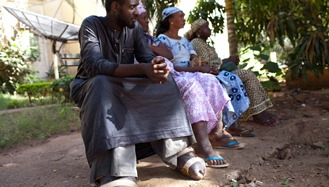Oct 30, 2015
By: Warren Lancaster, Senior Vice President, Programs
It is not often in my experience that you sit in a meeting listening to a presentation and are astounded at what you hear. But that happened to me at the annual COR-NTD meeting in Philadelphia, which focuses on the research needs in the fight against NTDs.
A presentation was made about trials in Papua New Guinea, where a modified treatment strategy for lymphatic filariasis was begun 2 years ago. In the trial, in place of the conventional dual combination therapy of two drugs, albendazole and DEC, a triple combination therapy was trialed on a small group of volunteers. In the trial, both albendazole and DEC were administered as usual but with Mectizan added, a drug that is used in Africa, instead of DEC.
What was presented was truly remarkable. After treatment with the triple therapy, the patients were completely free of any microfilariae. Microfilariae are the juvenile worms produced by nesting adult worms and they clog the lymphatic system that can ultimately lead to elephantiasis.
Why is this so remarkable? The conventional dual drug therapy has always been known to kill microfilariae but not all of them after a single dose. For this reason, conventional treatment guidelines are for at least seven annual treatments, the life span of adult worms, to communities where the disease is endemic. After these seven rounds, it can be expected that the cycle of transmission will have been broken.
Treating lymphatic filariasis is always about two goals. Firstly, curing people infected with this terrible disabling disease and secondly, treating enough of them in a community that there is no longer a big enough human host reservoir for mosquitos to pick up and pass on to other people. This trial contributes in a very significant way to both aims but especially the second.
So what happens now? The trial was quite small but it was large enough to show conclusively that administering the three medicines in combination is safe to administer to communities. That means that the triple combination therapy can be safely tried at a much larger scale in different countries under controlled conditions.
Lymphatic filariasis is targeted by the World Health Organization for elimination. If the large-scale trials are successful in the same way, we may have a new and much faster route to elimination. It is hoped that in countries where there is a low prevalence of infection, only 2-3 rounds of treatment may be necessary in future. Where there is a high rate of infection, perhaps as few as 3-5 rounds will be needed before treatment can be stopped. Practically this results in hundreds of millions fewer treatments and many less rounds, which when large geographical areas are being treated, is an enormous saving in costs of logistics.
Ultimately, the impact of this research is bringing the horizon of elimination closer.

